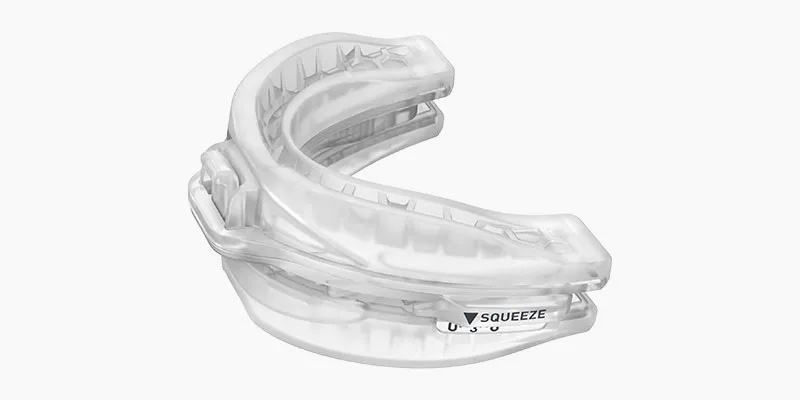Buying Guide
Habitual snoring is fairly common in adults; according to the latest estimates, roughly 40% of men and 25% of women snore on a regular basis. There are no proven cures for snoring, but many people who snore can reduce their symptoms using anti-snoring mouthpieces and mouthguards. These simple devices can suppress snoring by either moving the jaw forward or pushing down the tongue. Anti-snoring mouthpieces and mouthguards usually do not require a doctor’s prescription, and are widely available; most models are priced at $100 or less.
This guide will explore snoring and anti-snoring technology in-depth, and also list some considerations for anti-snoring device shoppers, as well as our picks for the best low- and high-price models.
How Do Anti-Snoring Mouthguards and Mouthpieces Work?
Snoring occurs when the upper airway is restricted. This causes a tickling sensation at the back of the throat, which in turn results in harsh — and often loud — gurgling sounds. Several factors can cause snoring. Obesity is one of the leading causes; excessive skin and fat around the throat can significantly restrict circulation in one’s airway. Cold- and allergy-related congestion can also cause snoring, as can consumption of alcohol or antidepressants, which make the throat relax.
Additionally, many adults snore due to sleep apnea. The most common type is obstructive sleep apnea (or OSA), a sleep disorder characterized by temporary loss of breath during sleep. OSA occurs due to physical obstructions in the airway that hinder the breathing process; the average adult with OSA experiences dozens of apnea-related breathing-loss episodes per night. Central sleep apnea, which occurs when the brain is unable to send proper signals to the muscles that control breathing, can also lead to snoring. However, most apnea-related snoring is directly linked to OSA. Sleep apnea is considered a serious condition because it increases the risk of heart disease, stroke, and diabetes.
There is no known cure for sleep apnea at this time. Many adults with sleep apnea utilize continuous positive airway pressure (CPAP) machines, which deliver a steady stream of air based on the user’s prescribed pressurization rate; or bilevel positive airway pressure (BiPAP) machines, which deliver air at two levels, one during inhalation and one during exhalation, to ease breathing for sleepers. A third option is a machine that provides automatic positive air pressure (APAP), which consists of pressure rates that change based on the sleeper’s breathing patterns. CPAP primarily alleviates the symptoms of OSA, while BiPAP therapy is usually most helpful for people with CSA. APAP is suitable for both types of sleep apnea.
These machines can be highly effective; however, they are often expensive ($200 is considered the base price) and both machine types require a doctor’s prescription.
Anti-snoring mouthpieces and mouthguards can be a cost-effective and relatively hassle-free alternative to CPAP and BiPAP machines. These devices reduce snoring by creating physical barriers between soft, vibrating tissues in the mouth and throat that cause snoring sounds. When referring to anti-snoring devices, the terms ‘mouthpiece’ and ‘mouthguard’ are essentially synonymous. Mouthpieces and mouthguards used to reduce snoring generally fall into one of two categories:
- Mandibular Advancement Devices: Also known as MADs, these devices are the most commonly used type of anti-snoring mouthpiece. They expand the airway by moving the lower jaw, or mandible, forward, which presses down the tongue and other breathing muscles attached to the mandible. An MAD is normally molded to the user’s teeth, and some feature an adjustable lower tray that can be moved forward or backward. Some specialty MADs are designed for use with CPAP/BiPAP machines; in these cases, the device functions in the same way as a standard CPAP or BiPAP mouthpiece.
- Tongue Retaining Devices: Unlike MADS — which hold the lower jaw in a forward position — TRDs (also known as tongue-stabilizing devices, or TSDs) pull the tongue forward and expand the gap between the tongue and the back of the throat. TRDs usually look like clear pacifiers; the tongue fits into an opening at the front, creating suction that pulls the tongue down and away from the back of the throat. TRDs do not require molding; most come in one size that is designed for all users.
The table below outlines the key similarities and differences between MADs and TRDs:






